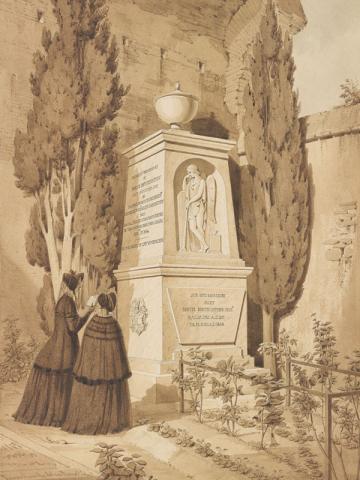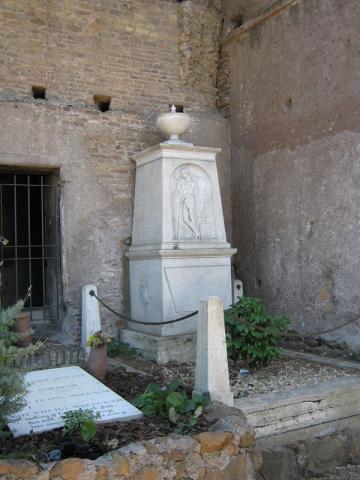
1851

2013
The English burying place is a green slope near the walls, under the pyramidal tomb of Cestius, & is I think the most beautiful and solemn cemetery I ever beheld. To see the sun shining on its bright grass fresh when we visited it with the autumnal dews, & hear the whispering of the wind among the leaves of the trees which have overgrown the tomb of Cestius, & the coil which is stirring in the sunwarm earth & to mark the tombs mostly of women and young people who were buried there, one might, if one were to die, desire the sleep they seem to sleep. Such is the human mind & so it peoples with its wishes vacancy & oblivion.
—Percy Bysshe Shelley, Letters, II, 487–488
During the first half of the nineteenth century, the Protestant Cemetery expanded westward from where the graves of Keats and Severn lie in the shade of the Pyramid of Cestius. The monuments from this later period follow the interior line of the ancient Aurelian Walls, the brick masonry of which is visible in the background of Amici’s drawing. Two women stand before the monument of Bertie Bertie Mathew, who died in Rome after falling from his horse. The two visitors are dressed in mourning clothes, including black crepe mantles and veiled bonnets, suggesting they are relatives of the deceased.
Domenico Amici, Two Visitors to the Tomb of Bertie Bertie Matthew, 1846. The Morgan Library & Museum, gift of Charles Ryskamp in memory of Mrs. Alan Valentine. Photography by Steven H. Crossot
Location photography by John Pinto
